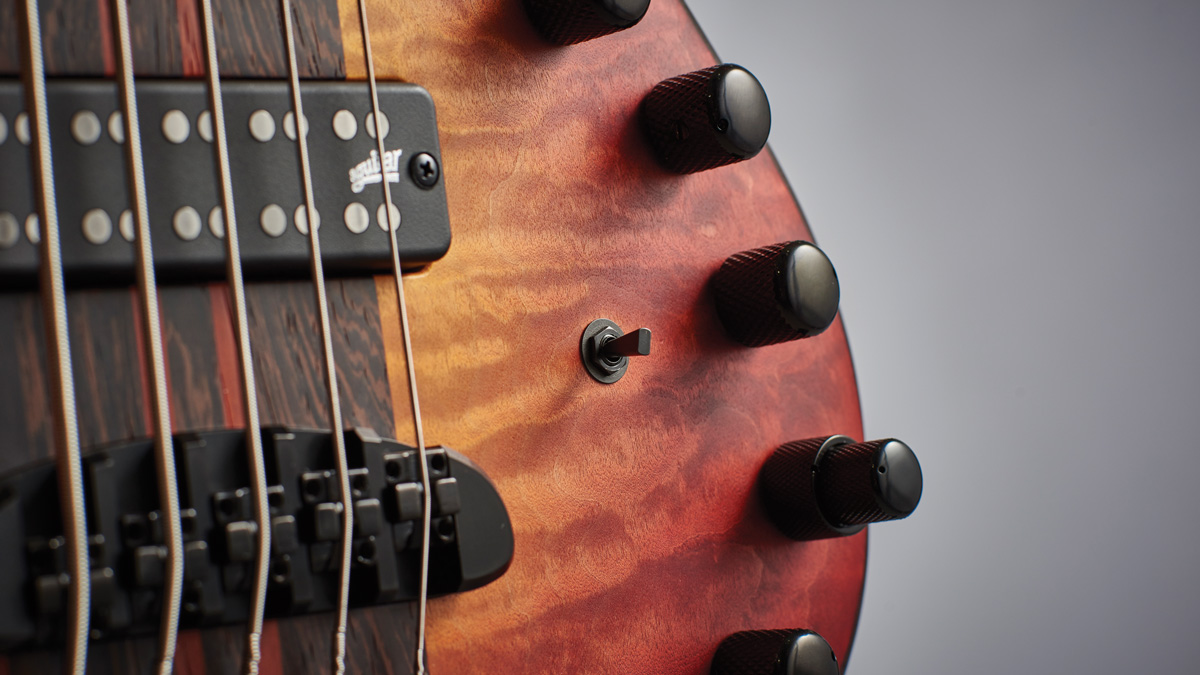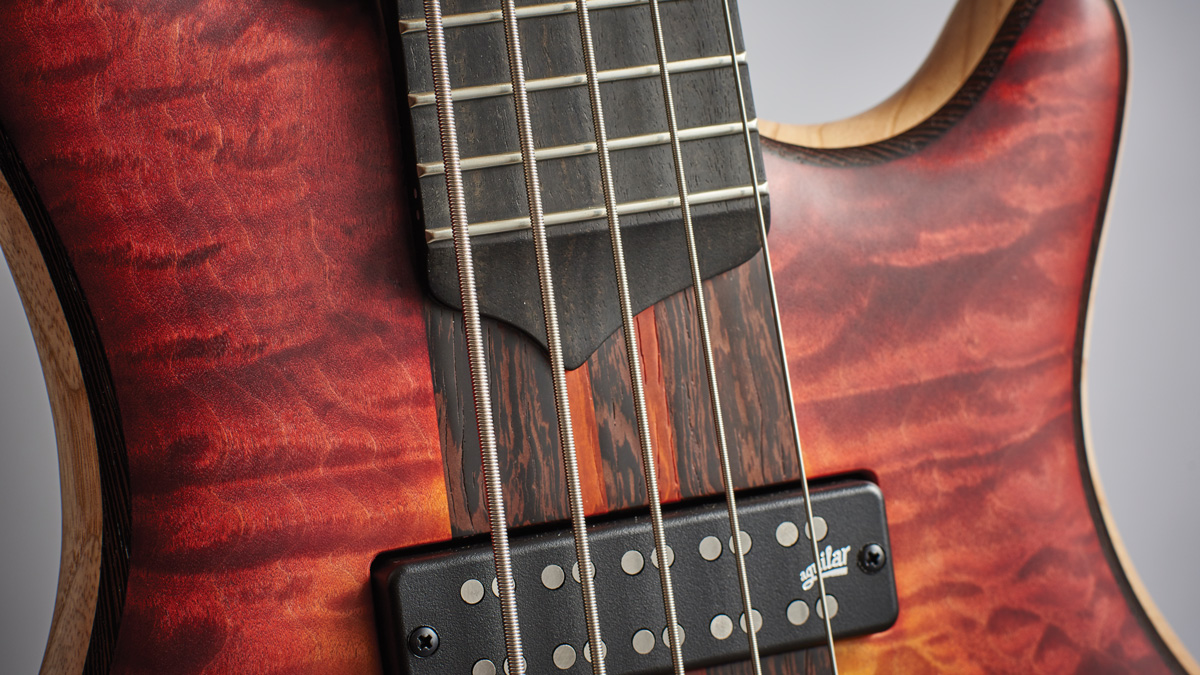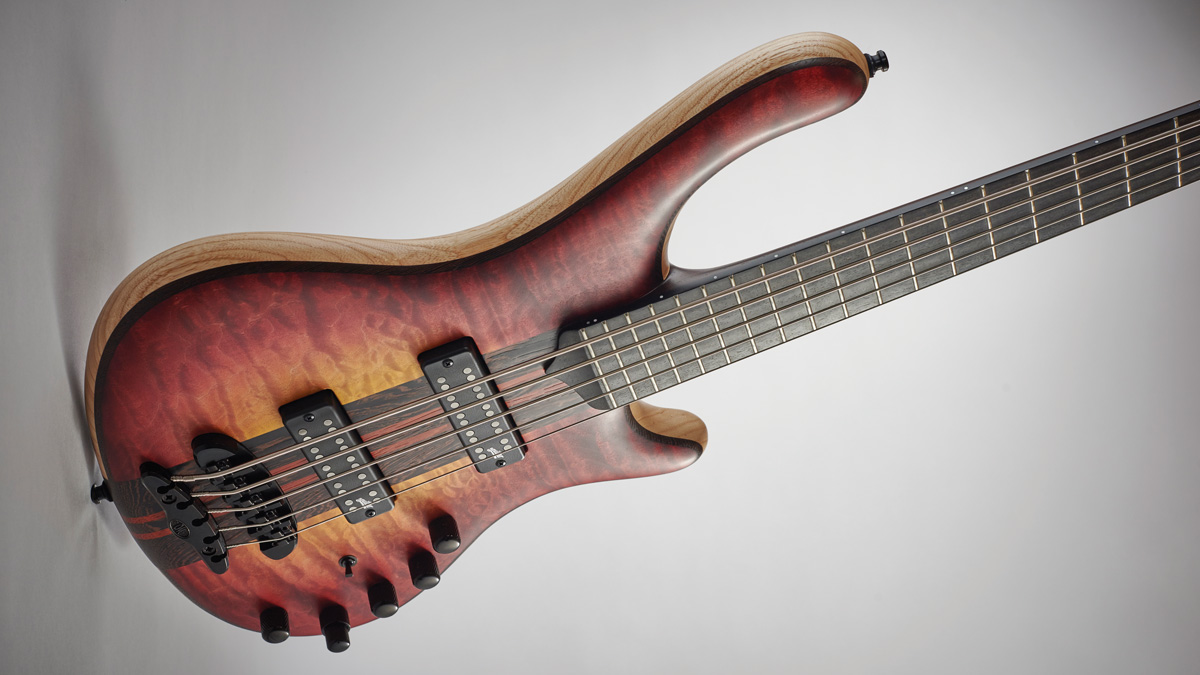MusicRadar Verdict
Well crafted and supremely set-up.
Pros
- +
Great playability and a very usable low B string.
Cons
- -
Not cheap, but you’re getting what you pay for.
MusicRadar's got your back
No matter how many sumptuous basses we see, there really is no end to the number of head-turning combinations available: we’re as easy to impress with a nice paint job as the next bassist.
However, luscious looks can’t disguise whether a bass sounds good or not - and at a snip under £3000, the cost of Mayones’ new Prestige Classic, you really should expect a quality package in all respects. The Polish luthier continues to make impressive inroads in the bass market, so does the Prestige deliver the goods?
Build
Eye-catching is an understatement here. The Prestige’s curvaceous body is accented by the light-coloured swamp ash bodycore and darker wenge laminate before reaching the glorious quilted maple top. With a satin finish, the natural woody element to this bass is there for all to see, feel and hear, reinforced by the five-piece wenge and padauk through-neck laminates.
The rounded body edge contour disguises minimal front and rear contouring, although this shouldn’t inhibit the player’s enjoyment when playing the bass.
The extensive cutaways and elongated top horn give the bass good balance and playability, particularly in the upper regions of the 24-fret ebony fingerboard. Its natural visuals are maintained with no front- facing position markers, although white side dots are present.

The 34.25” scale neck, reinforced internally with graphite rods, feels a little longer than normal, maybe due to the inlaid positioning of the two- piece Mayo bridge. In theory, the extended scale should improve the speaking length of the strings and give the low notes greater focus and a more pronounced articulation.
The black hardware choice is ideal for this colour combination, and the matching headstock is very much the icing on the cake. The Schaller M4 machine heads work perfectly, as does the extensive control set, all of which are solidly attached with a smooth operation. There are controls for volume, pickup pan, middle, a stacked control for bass and treble and a passive tone control, finished with an active/passive switch.
Sound
Acoustically, this is a very impressive instrument: feeling solid and silky smooth, it promises great things. The organic natural tone is thorough, the through-neck construction almost guaranteeing a low-mid bias in its response.
It comes as no surprise then that once plugged in, an organic sound is very much to the fore and with the EQ set at, the tones are solid and woody, almost dark-sounding - so the bass and mid-EQ needs to be handled sensibly. Working with the mid- EQ, cutting it gradually hollows out some of the instrument’s natural bark, which will benefit slappers and tappers.
Boosting the midrange slightly livens this bass up, and for fingerstyle players or pick players, this slight boost should give enough presence in a band mix without having to add a lot of treble to cut through the din.

Panning between the pickups shows just how good these Aguilar units are - and although they don’t have the slinky finesse of single-coil pickups, they give the bass a forceful delivery with plenty of power and a rounded full sound.
Even when panned solely towards the bridge pickup, you can have a degree of honk and bite without losing too much low end. With the control set centrally, utilising both pickups, this bass produces a well-balanced sound to work with.
If a glassy top end is your requirement, the Aguilar OBP-3 is certainly capable of delivering that - but we found that going too far in that direction detracted from the woody character that is this instrument’s calling card. The hardness of the ebony fingerboard contributes to the dark tones, but also reinforces the preciseness and treble response of the D and G strings.
The 19mm string spacing, 45mm nut width and slimly rounded neck profile make for a highly playable instrument, the satin finish providing a smoothness that runs the length of the neck, right up to the smoothly rounded neck heel.
Navigating this five-string is a pleasure, as the setup is excellent and the note response from string to string is thorough and lively. The natural resonance of the timbers is very much to the fore: at several points, the bass responded not unlike a bolt-on instrument in terms of its ‘spring’ and ‘bounce’, depending on the playing techniques used.
High marks are awarded for the visuals and general playability of this Prestige: this is a very rewarding five-string bass. Its high pricetag will put some players off, but we can highly recommend giving this bass a workout at the earliest opportunity. It really is a pleasure to play. Well worth investigating.
“A synthesizer that is both easy to use and fun to play whilst maintaining a decent degree of programming depth and flexibility”: PWM Mantis review
“I feel like that song had everything we needed to come back with”: Bring Me The Horizon’s Lee Malia on Shadow Moses, its riff and the secrets behind its tone, and why it was the right anthem at the right time
“I said, ‘Are we sure we can write a song about death?’”: The story of Mike + The Mechanics' classic No.1 The Living Years










